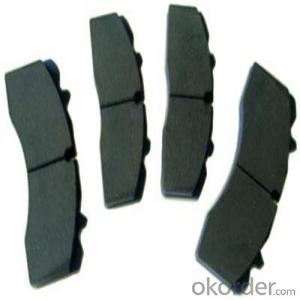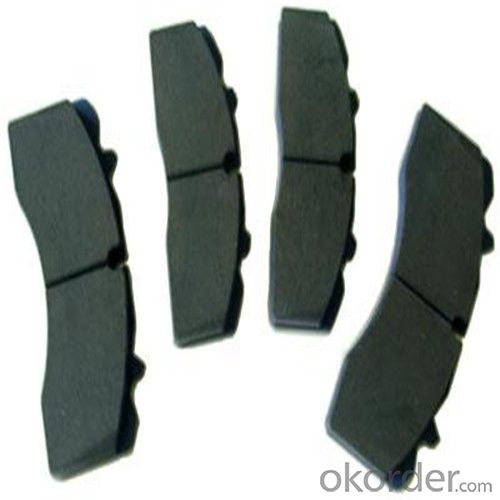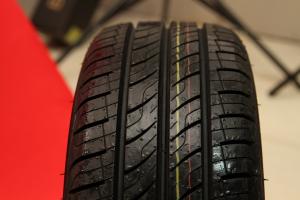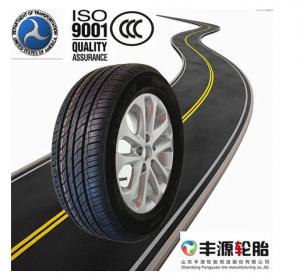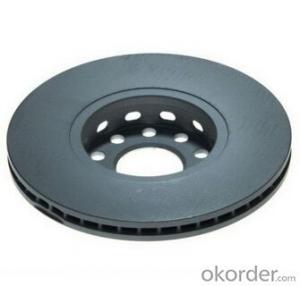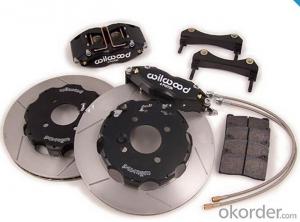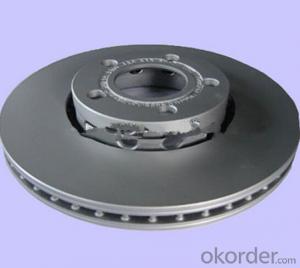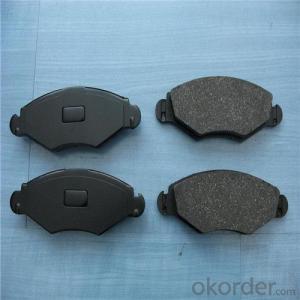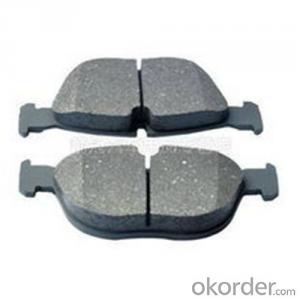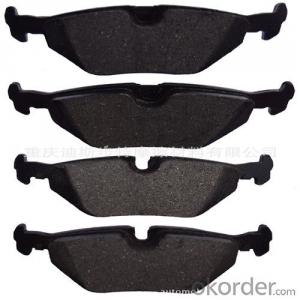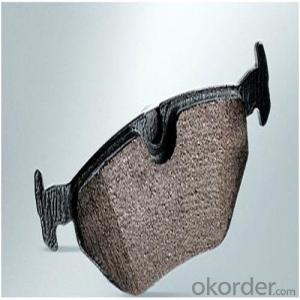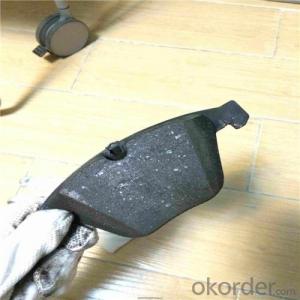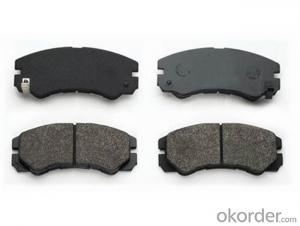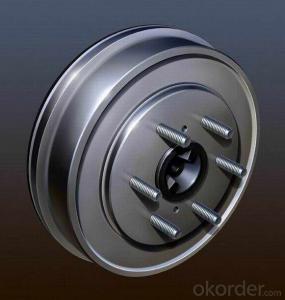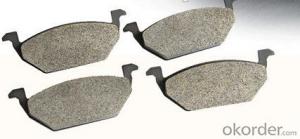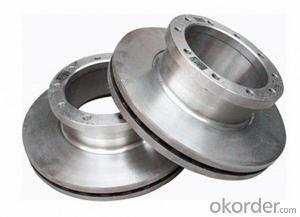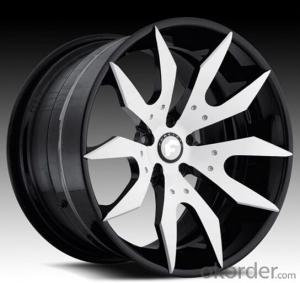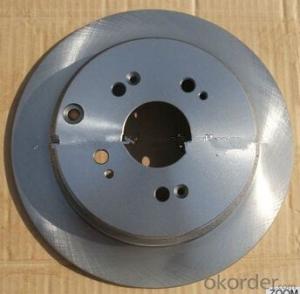High Quality Auto Parts Brake Pads /Brake Linling
- Loading Port:
- China main port
- Payment Terms:
- TT OR LC
- Min Order Qty:
- 20000 pc
- Supply Capability:
- 2000000 pc/month
OKorder Service Pledge
OKorder Financial Service
You Might Also Like
Quick Details
Packaging :
| Packaging Details: | Usually packed by Neutro packing inside,white/colored carton outside |
| Delivery Detail: | within 30 days after deposit |
Specifications
Japanese car brake pads
1.Good performance of brake pads with long life time
2.No black dust residue
3.Less brake disc wear
1.Material:
Semi-metallic, low-metallic and ceramic, Non-asbestos.
2.Certificate:
ISO9001 and TS16949 approved.
3.Advantage:
-Significantly reduced dust development
-Practically noise-free
-Better rim appearance
-Greater comfort
-No brake judder
-Better environmental protection
-Lower repair costs
-Very safe
4.The price will be sent to you soon after get your OEM or Drawings.
We are trying to do our work better to improve our products so that we can make all of our customers' satisfied. All inquires will be greatly appreciated.
picture of brake pad:
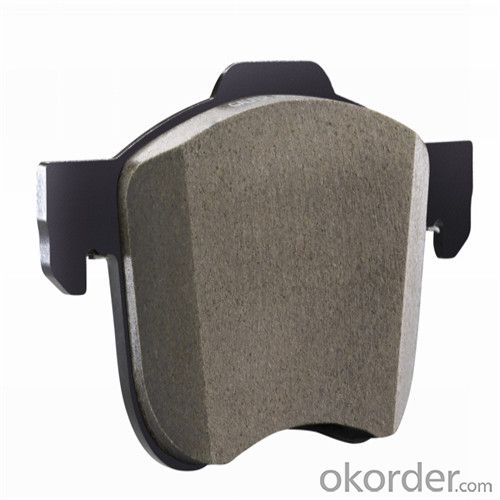
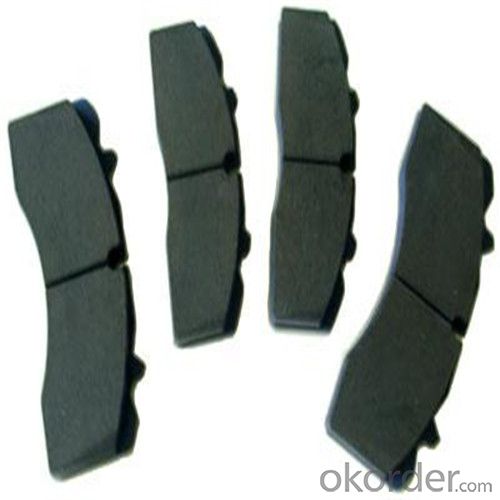
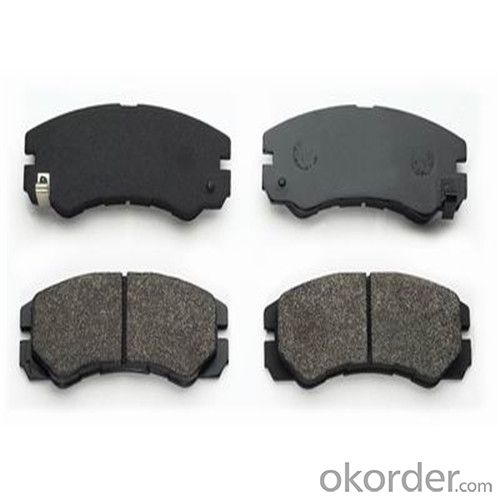
- Q: Can anyone tell me how to fix a brake pad that travels all the way down to the floor when I try to break? I put in a new master cylinder and I also purged the master cylinder so that it would be free of air. I also purged all four wheels to see if the oil lines had any air and everything was correct. But, the problem still persists. The brake pedal still travels all the way down (meaning, that I don‘t know how much force to apply in order to brake) and I don‘t know what else to do. Can anyone help me? Thank you.
- few are most are cable that works pads/shoes manual wouldnt need caliber kind depends on car didnt say what year or model might find many brake how to's by typing how to check brakes pads how to replace brake pads how to bleed brakes how to replace caliber how to remove brake rotor how to adjust e brake how brakes works
- Q: i mean what is the difference between air brakes and vacuum brakes. also tell me the types of electrical braking systems in an electric locomotives.
- air brakes supply air to push a piston to apply the brakes,these are double systems with fail safe mod to increase force up to 20% vacuum systems used up to 1970 used vacuum to pull the piston but only worked at 14.7 psi ,atmospheric pressure so everything had to be much larger and heavier to increase efficiency electopneumatic uses electricity to control the brakes so they can all come on at the same time instead of sequentially as in the air only system dynamic braking is where the drive motor become generators that create torque at the drive wheels to slow the train,the power generated is turned to heat and discharged by fans,not all engines have this system
- Q: I have a 95 Isuzu Puck-up 2WD rear. The other day I drove it for the first time since my g/f has had it. Only she never told me how badly the truck pulls to the left when the brake is applied. she just said she thought I knew and didn‘t think it was a big deal. yay! I haven‘t had time to fully check it out but am looking into ideas as to what is causing the issue. Generally the lines collapse or harden when it pulls as it is. The only problem is my entire brake lines are all steal. My other thought it possible the brakes are sticking but i couldn‘t see them sticking that badly either. Besides I replaced the brakes pads a few years back and didn‘t notice anything wrong with the calipers or anything else. The fluid has been replaced about half a dozen times from when I had to replace the rear end 2 years ago. Anyway any suggestion as to the problem would be greatly appreciated. Thanks!
- Oklatom is 100% right!!!!
- Q: I need to change the wheel bearing and they ask me, at the auto-parts, if my Nissan Altima S 2006 does have the ABS brake system
- Hi, Well it can be done but you need to be a class A fabricator. You would have to change transmissions ,axles ,suspensions ,etc. And a big shop. Its not a project for the beginner.
- Q: My ABS light came on in my 1993 Jeep Cherokee Laredo and want to know why?I think I tripped a wire using pliers to crank it because it sparked,but not quite sure.Also I have realized that when my ABS light is on my blinkers don‘t work and neither does my window.Can anyone diagnos the problem?Is it all in the steering column?If so,what parts do I need to order?and of not,Hoe much is it to have a mechanic check the ABS and fix it?
- It is a built in safety device to stop you from getting a speeding ticket by alerting you to the fact you are most likely going in excess of the legal posted speed limit.
- Q: I just had Brake Fluid added to my 2004 Impala because the LOW BRAKE FLUID light flashed once. Does the flashing of this light necessarily mean i will HAVE to get new brake pads a month from now? Thanks
- OKCar manufactures put a lot of time into the design of everything on cars. The brake system is designed with the consumer in mind. They know that the average person does not look at their brake pads and rotors on a regular basis to inspect for wear. The size of the caliper reservoirs, brake line length and diameter, pad thickness, rotor wear, etc. all use a certain amount of brake fluid. They then use the appropriate size master cylinder to hold just the right amount of fluid to maintain the braking system. When your brakes have reached their limit of use / wear the fluid level activates the IDIOT light. If you add brake fluid, provided there is no leak, when the brakes are serviced, the caliper cups are pushed back into the caliper, the fluid returns to the master cylinder, and will overflow all over everything. YOU SHOULD NEVER HAVE TO ADD FLUID unless you flush the system. Brake fluid does not evaporate. Expect a mess, and tell whom ever is going to do the brakes that they will overflow.
- Q: Is it worth it making those changes? Or is it just better if i buy the Trek 4300 with disc brake option?my bike is still in great condition, so i don‘t see buying another one as an option.i just want to try to make those changes, but if just buying one is the better option then so be it
- Making the change is feasible only if your frame has the mounting lugs for the discs. If that's not the case then either a new bike with discs is in order or a new frame for yours. There's no economical way to mount disc brakes if your frame doesn't have the lugs. Look on both the rear of your frame near the drop-outs and on the forks, if there's not two lugs with mounting holes present on both of them your bike won't accept discs. One other point, if you can do it. do it with hydraulic discs not mechanical, for far superior performance.
- Q: Whats the difference between abs and brake booster breaking systems ?
- A brake booster uses engine vacuum or hydraulics to give a power assist to the pedal. This makes it easier to push the pedal and increases braking effectiveness. ABS is controlled by a computer called the Electronic Brake Control Module. This computer uses wheel speed sensors to detect a slip condition at one or more wheels caused by a traction loss such as ice, water, snow, etc. When the computer detects this, it activates servos that are connected inline with the brake hydraulic system. The servos pulsate the brake pressure rapidly to regain traction at the slipping wheel. It's a much faster way of doing the old-timey pump the pedal thing that grandpa learned.
- Q: After touchdown I press f2 to put the plane in reverse but only the engines slow it down and not the speed brakes. In the landing lessons, pressing f2 engages everything including the speed brake.
- Press shift + / together while the aircraft is on final/short final in FSX and this will arm the spoilers and when you touch the spoilers will deploy. This opens the spoilers just a little but once you touch they deploy. That is what I use. Although some do deploy automatically. As far as the flaps those are entirely manual and you have to extend/retract them yourself using F6 to retract in increments F7 to extend in increments and F8 to extend fully in one click.
- Q: Why is it that when my car is turned-off, I can only press the breaks a couple of times before it stiffens up?
- Hello, I feel I haven't heard an answer of my taste, so please hear mine: In your car you have a servoed brake system (except if you are having an old 911 Porsche which was unservoed for better feel :D). This is a pneumatic drum, which has a membrane in the center. This membrane is connected with the brake pedal. One of the sides of this membrane is connected to the inlet tract of your car. When the engine is runnig, this inlet tract has a pressure smaller than the atmospheric (also called vacuum). think of it as a suction force. This force is applying a base force to the brake pedal. It's set up so that when you aren't pressing the pedal, the servo drum itself hasn't got the power to apply actual braking. But when you press it, you don't have to press it so hard, as without this base force. Thus, pressing the brake pedal is easier. This drum can store this negative pressure, for a couple of braking actions, because when the engine goes off, your brake power assistance would go away instantly and you wouldn't be able to stop, or at least with great physical effort. And here comes the REAL answer: When you get into the car, engine does not run, normally you STILL have some negative pressure in your servo (which means that you HAVE the brake assistance) ! That's why it's easy to push it a couple of times! After a couple of braking, the servo drum depletes, and afterwards you can feel the real power needed to brake your car! When you don't belive me, try this: 'pump up' the brake pedal, so that it's hard to push. Now it's empty. Put your foot on the pedal (not too hard) and start your engine! You will feel, that after revving up, the brake pedal will go down, after the drum has built up it's vacuum. I hope I helped you (and others) out with this. Regards
Send your message to us
High Quality Auto Parts Brake Pads /Brake Linling
- Loading Port:
- China main port
- Payment Terms:
- TT OR LC
- Min Order Qty:
- 20000 pc
- Supply Capability:
- 2000000 pc/month
OKorder Service Pledge
OKorder Financial Service
Similar products
Hot products
Hot Searches
Related keywords
